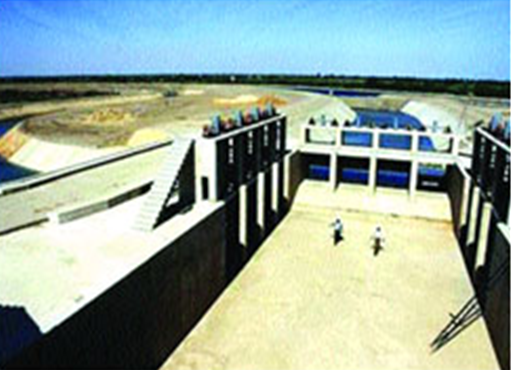Karachi: water supply
This is a collection of articles archived for the excellence of their content. Readers will be able to edit existing articles and post new articles directly |
Karachi: water supply
The water story
By Shaikh Aziz
THE story of water supply to Karachi is an old one. In the days before the English took over (in 1843) the main source of water for the city’s denizens was a few wells dug in the Liyari riverbed or along its banks. Some water tanks at Ram Bagh and Rattan Talau also stored rainwater which was picked up by the bihshtees (water-takers) in their mashkeezas and given to residents and shopkeepers for some nominal charges.
When the English finally shifted the capital of Sindh from Hyderabad, they needed water for their army, civil administrators and the people. In 1845 a survey was conducted to search for some dependable resources. There were many plans, such as tapping underground resources in the Malir, Hub and Indus rivers. The task was undertaken by an engineer, Chapman, who later got drowned in the Indus. The other scheme to draw water from the Hub River was assigned to T. G. Newnham, but that was shelved on suspicion the water there was saline.
Subsequently, the Malir River bed was spotted which had accumulated floodwater in a large quantity. The scheme was visualised by Col C. J. Marriman, who thought that the riverbed contained enough underground water that could be drawn by digging wells. The scheme was later handed over to James Strachan, the civil engineer and secretary of the Karachi Municipal Committee (after whom a road has also been named).
His initial plans were not accepted owing to inordinate expense estimates. He altered it and estimated that eight gallons of water per head would cost Rs850,000, which was finally accepted. Sir Richard Temple launched the scheme on Feb 18, 1880. The reservoir was later called the Temple Reservoir. In April 1883, the scheme was commissioned by H. M. Birdwood, the judicial commissioner of Karachi, at the time.
Under the project two wells measuring 38ft deep and 40ft in diameter were dug out, of which water was pumped out to a reservoir 6,551ft away. The reservoir was 150ft wide and 200ft long having a depth of 10ft. It entailed a cost of Rs854,973. The water was then stored and flowed through a nine-mile long masonry conduit of 2’3”x3’3” dimension with a declining height of two feet per mile making the flow swifter. It was estimated that since the city was a little above sea level, the water would reach higher elevation as well. Later another Rs315,292 were spent to extend water pipes and the distribution system to enable the bihishtees to fill their mashkeezas.
In April 1890, the chief officer of municipality, J. Frost Brunton, directed digging of another well at 4th mile which was done for Rs5,523. In 1901, as the demand increased another well at Dumlotte was dug at a cost of Rs4,358. The same year another well of 35ft was dug providing 2,400 gallons per day. In 1895-96, a larger reservoir was built with an expenditure of Rs120,000.
In 1904, the whole project was reviewed. It was noted that all three resources provided 4,266,000 gallons of water on a daily basis. Out of this water 78,700 gallons were allocated for the army, 70,000 gallons for the railways and 3238,000 gallons was reserved for domestic purposes, which meant 26 gallons per head.
In 1906, the need for more water arose forcing the municipality to ration the water for all major consumers. The army, the railways and the businessmen who needed water connection of more than half-an-inch were given meters and were charged nine rupees per 1,000 gallons. For domestic use people demanding connections of half-an-inch were charged one-and-a-half rupee per month, for three-quarters of an inch three rupees, and for one inch six rupees. Houses with lawns were charged two per cent of the monthly rental value.
As the demand grew further, various administrations continued to search for more resources and finally Kinjhar and Haleji lakes were found to be the source that could provide water to the region. In 1930, the British Army needed more water so it looked for Haleji Lake. Finally, a proper water supply canal was dug to bring water from these lakes. Ultimately, when the Kotri Barrage was commissioned in 1955 a canal Kalri-Baghar Feeder was taken out from the Indus River to ensure continued water supply to Kinjhar Lake, and finally to Karachi which was expanding at a rapid pace.
Today Karachi’s water demand of 550 million gallons per day (MGD), 450 MGD is being met by the Indus via Kinjhar, and the rest from Malir and Hubb dams.
